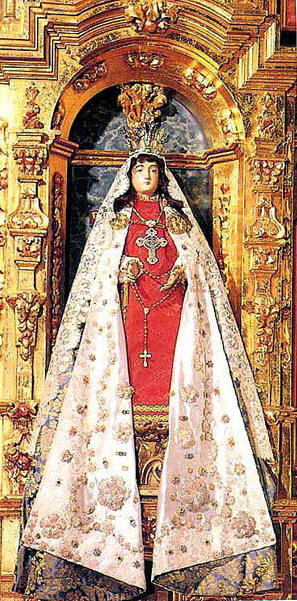 The
Final Hour
by Michael Brown
All-time bestseller on apparitions and prophecies. Betania, Fatima,
Garabandal, Knock. A fascinating look at secular history and the Bible. Dive into the secret spiritual aspects of the last 100 years. Terrific
photos. Featured on NBC's 'Ancient Prophecies,', Sally Jessy Raphael, and
Mother Angelica (EWTN). The
apparitions, prophecies, and messages in this Age of Mary!
Popular since 1993. From the French Revolution through Nazism, Communism,
the occult, and the Sixties, follow the progression of evil and the Blessed
Mother's valiant, remarkable attempts to defeat it!
CLICK HERE The
Final Hour
by Michael Brown
All-time bestseller on apparitions and prophecies. Betania, Fatima,
Garabandal, Knock. A fascinating look at secular history and the Bible. Dive into the secret spiritual aspects of the last 100 years. Terrific
photos. Featured on NBC's 'Ancient Prophecies,', Sally Jessy Raphael, and
Mother Angelica (EWTN). The
apparitions, prophecies, and messages in this Age of Mary!
Popular since 1993. From the French Revolution through Nazism, Communism,
the occult, and the Sixties, follow the progression of evil and the Blessed
Mother's valiant, remarkable attempts to defeat it!
CLICK HERE
|

__________________________________________________
ANALYSIS OF SAMPLE FROM
'MIRACULOUS' STAIRS IN SANTA FE FOUND UNKNOWN SPECIES OF WOOD
 You
perhaps have heard of it, the staircase at Loretto Chapel in Santa Fe, New
Mexico, where -- according to the literature -- nuns who operated a
convent there began a novena to Saint Joseph, patron of carpenters and
builders, when they needed a way to easily traverse up to the choir loft,
which previously had been accessed by ladder. Their dilemma was that there
was no room for a stairway as normal stairways go. A flurry of carpenters
they consulted had said so.
You
perhaps have heard of it, the staircase at Loretto Chapel in Santa Fe, New
Mexico, where -- according to the literature -- nuns who operated a
convent there began a novena to Saint Joseph, patron of carpenters and
builders, when they needed a way to easily traverse up to the choir loft,
which previously had been accessed by ladder. Their dilemma was that there
was no room for a stairway as normal stairways go. A flurry of carpenters
they consulted had said so.
According to accounts, on the last day of
the novena, a gray-haired man came to the convent with a donkey and a tool
chest -- basically, a saw, a hammer, and a square. He also needed tubs
to soak wood. They gave him the job, and he set about the work on July 25,
1873, taking
what is now estimated as six to eight months to complete it. Only wood
pegs (no nails) were used. And the result was exquisite.
"The winding stairway that the old man left
for the sisters is a masterpiece of beauty and wonder," noted St.
Joseph Magazine.
"It makes two complete 360-degree turns. There is no supporting pole up
the center as most circular stairways have. This means it hangs there
with no support. The entire weight is on the base. Some architects have
said that by all laws of gravity, it should have crashed to the floor the
minute anyone stepped on it and yet was used daily for nearly a hundred
years." Indeed, there are photos of the staircase
filled with members of the choir!
When the sisters went to pay the man,
continues the account, he had vanished. There is no record of paying anyone a penny
for the incredible piece of carpentry.
 We
have had an article on this previously. "I spoke with Urban C. Weidner, a
Santa Fe architect and wood expert, about the staircase," noted
Sister M. Florian. "He told me that he had never seen a circular wooden
stairway with 360-degree turns that did not have a supporting pole down
the center. One of the most baffling things about the stairway, however,
is the perfection of the curves of the stringers, according to Mr.
Weidner. He told me that the wood is spliced along the sides of the
stringers with nine splices on the outside and seven on the inside. Each
piece is perfectly curved. How this came about in the 1870s by a single
man in an out-of-the-way place with only the most primitive tools has
never been explained."
We
have had an article on this previously. "I spoke with Urban C. Weidner, a
Santa Fe architect and wood expert, about the staircase," noted
Sister M. Florian. "He told me that he had never seen a circular wooden
stairway with 360-degree turns that did not have a supporting pole down
the center. One of the most baffling things about the stairway, however,
is the perfection of the curves of the stringers, according to Mr.
Weidner. He told me that the wood is spliced along the sides of the
stringers with nine splices on the outside and seven on the inside. Each
piece is perfectly curved. How this came about in the 1870s by a single
man in an out-of-the-way place with only the most primitive tools has
never been explained."
Indeed, it is a gorgeous piece of woodwork
-- now with banisters (it was originally constructed without any).
An angel? St. Joseph himself?
"Sisters, going in to the Chapel to pray,
saw the tubs with wood soaking in them, but the man always withdrew while
they said their prayers, returning to his work when the Chapel was free,"
says another account. " Some there are who say the circular stair which
stands there today was built very quickly. Others say no, it took quite a
little time. But the stair did grow, rising solidly in a double helix
without support of any kind and without nail or screw. The floor space
used was minimal and the stair adds to, rather than detracts from, the
beauty of the chapel."
We would like to emphasize another twist
to this mystery. It comes to us from Richard Lindsley,
who managed the Loretto Chapel (which is now in private hands) from 1991
to 2006 and says at one point he took a sample of wood from the staircase and gave it to a scientist named Forrest N. Easley,
who worked at the Naval Air Weapons Station at China Lake, California.
"I went to the top of the stairs," Lindsley
told Spirit Daily. "There's a crack that's held together with a
metal plate. The staircase had sunk an inch or inch-and-a-half into the
floor. That's where I pried a loose piece and gave it to him. I expected
to hear the results quickly."
Instead, says Lindsley, two months passed and
he
all but gave up about hearing anything. But one day, he recalls, Easley showed up at the
chapel because he wanted to report his results in person. What he told Lindsley was straight to the point: the wood sample was spruce
of no
known subspecies. It matched nothing in the scientific record. Easley
had wanted to thoroughly search through all known data. That's what had
caused the delay. He researched it further and after 18 months came out
with a careful, measured statement saying that the wood from the staircase
had molecules that were "very dense and square" and indicated that it had
come from trees that grew slowly in a "very, very cold place," like Alaska
(not New Mexico).
That was interesting because at the time
the chapel was constructed -- by the mysterious stranger -- there was no
rail system that could have brought in the wood from such a distance, and
no local trees that grew above an elevation of 10,000 feet -- which is the
only place of comparable cold.
The closest match remained spruce from
Alaska.
In short, it was no known type.
"He claimed to have discovered a new
subspecies," says Lindsley.
"He called it Pinacae Ticea 'Josefii'
Easley," or 'Loretto spruce."
Let's call it a mystery.
Or a miracle.
Ah, St. Joseph!
How quickly he answers novenas!
How hidden he is.
[resources: The
Holy Cloak novena to St. Joseph (highly, highly recommended),
The Life of
St. Joseph,
St. Joseph, Patron of the Triumph, and
Favorite Prayers to
St. Joseph]
[Print this]
E-mail this
link directly

Share with
Facebook or
Twitter
Return
to home page www.spiritdaily.com
 The
Final Hour
by Michael Brown
All-time bestseller on apparitions and prophecies. Betania, Fatima,
Garabandal, Knock. A fascinating look at secular history and the Bible. Dive into the secret spiritual aspects of the last 100 years. Terrific
photos. Featured on NBC's 'Ancient Prophecies,', Sally Jessy Raphael, and
Mother Angelica (EWTN). The
apparitions, prophecies, and messages in this Age of Mary!
Popular since 1993. From the French Revolution through Nazism, Communism,
the occult, and the Sixties, follow the progression of evil and the Blessed
Mother's valiant, remarkable attempts to defeat it!
CLICK HERE
The
Final Hour
by Michael Brown
All-time bestseller on apparitions and prophecies. Betania, Fatima,
Garabandal, Knock. A fascinating look at secular history and the Bible. Dive into the secret spiritual aspects of the last 100 years. Terrific
photos. Featured on NBC's 'Ancient Prophecies,', Sally Jessy Raphael, and
Mother Angelica (EWTN). The
apparitions, prophecies, and messages in this Age of Mary!
Popular since 1993. From the French Revolution through Nazism, Communism,
the occult, and the Sixties, follow the progression of evil and the Blessed
Mother's valiant, remarkable attempts to defeat it!
CLICK HERE You
perhaps have heard of it, the staircase at Loretto Chapel in Santa Fe, New
Mexico, where -- according to the literature -- nuns who operated a
convent there began a novena to Saint Joseph, patron of carpenters and
builders, when they needed a way to easily traverse up to the choir loft,
which previously had been accessed by ladder. Their dilemma was that there
was no room for a stairway as normal stairways go. A flurry of carpenters
they consulted had said so.
You
perhaps have heard of it, the staircase at Loretto Chapel in Santa Fe, New
Mexico, where -- according to the literature -- nuns who operated a
convent there began a novena to Saint Joseph, patron of carpenters and
builders, when they needed a way to easily traverse up to the choir loft,
which previously had been accessed by ladder. Their dilemma was that there
was no room for a stairway as normal stairways go. A flurry of carpenters
they consulted had said so. We
have had an article on this previously. "I spoke with Urban C. Weidner, a
Santa Fe architect and wood expert, about the staircase," noted
Sister M. Florian. "He told me that he had never seen a circular wooden
stairway with 360-degree turns that did not have a supporting pole down
the center. One of the most baffling things about the stairway, however,
is the perfection of the curves of the stringers, according to Mr.
Weidner. He told me that the wood is spliced along the sides of the
stringers with nine splices on the outside and seven on the inside. Each
piece is perfectly curved. How this came about in the 1870s by a single
man in an out-of-the-way place with only the most primitive tools has
never been explained."
We
have had an article on this previously. "I spoke with Urban C. Weidner, a
Santa Fe architect and wood expert, about the staircase," noted
Sister M. Florian. "He told me that he had never seen a circular wooden
stairway with 360-degree turns that did not have a supporting pole down
the center. One of the most baffling things about the stairway, however,
is the perfection of the curves of the stringers, according to Mr.
Weidner. He told me that the wood is spliced along the sides of the
stringers with nine splices on the outside and seven on the inside. Each
piece is perfectly curved. How this came about in the 1870s by a single
man in an out-of-the-way place with only the most primitive tools has
never been explained."